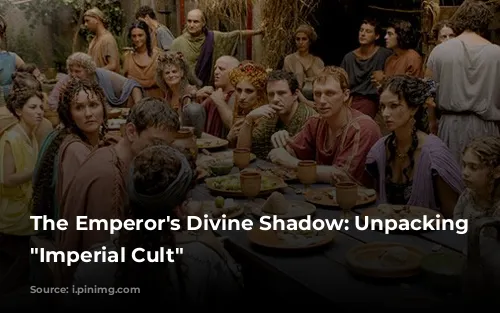The Roman Empire, a vast and complex entity, thrived on intricate power dynamics. At its heart was the emperor, a figure who held immense authority and demanded reverence from his subjects. Historians refer to this system of veneration as the “imperial cult”, a complex web of rituals and symbols meant to elevate the emperor to near-divine status.
A Shifting Landscape of Power
The rise of the Roman Empire marked a significant change in the political landscape. The emperors, although monarchs in all but name, were careful to maintain the facade of a republic. This careful balancing act was reflected in the religious language surrounding the emperor. While they were not gods, they were accorded “honours equal to those made to the gods” (isotheoi timai). This carefully crafted system emphasized the emperor’s unique position, blurring the line between mortal and divine.
The “imperial cult” was a deliberate strategy designed to solidify the emperor’s power. Drawing inspiration from the “divus Julius”, the deified Caesar, the emperors embraced a system of public rituals and ceremonies that emphasized their exceptional status. This elaborate display of reverence was intended to raise the emperor to divine equivalence, even in death, where he was consecrated as “divus” rather than “deus”. The subtle distinction between these terms highlights the delicate dance of power the emperors played. They were gods in a sense, but not gods in the traditional sense.
Ambiguity in the Language of Power
The “imperial cult” thrived on its inherent ambiguity. The emperors, while acting as official representatives of the Republic, were also, in a way, monarchs without being monarchs. This carefully constructed ambiguity permeated the language of power used to describe the emperor. It was a language designed to reinforce the emperor’s authority while maintaining the facade of a republic. This approach, however, was not without its challenges. Finding precise meaning in the varied terms used to honor the emperor is as difficult as deciphering the complexities of political rhetoric itself.
The “imperial cult” was a carefully crafted system that evolved over time. The emperors, year after year, used the power of the Senate to solidify their position and shape their image in the public eye. Their goal was to become ubiquitous figures in public religious events, a constant presence in the lives of their subjects. This gradual elevation, punctuated by carefully crafted decrees, cemented the emperor’s status as a divine figure, a bridge between the mortal and the divine.
Religion and Politics: A Symbiotic Relationship
The “imperial cult” also sheds light on the intertwined nature of religion and politics in the Roman world. Unlike our modern understanding of these spheres as separate entities, the Romans viewed them as inextricably linked. In their worldview, the gods were an active part of their daily lives, and any political action carried a religious dimension. This understanding is crucial to understanding the “imperial cult”. The emperors’ power was not simply a political construct, but a religious one, a divinely sanctioned authority.
The “imperial cult” also highlights the Roman understanding of the afterlife. While the emperors were not traditionally considered gods, their deification after death, as “divus”, highlights a unique blend of religious belief and political strategy. This elevation of the emperor into a hero-like figure, a “divus”, suggests that the Romans viewed their emperors not just as political leaders, but as individuals who had earned a special place in the afterlife.
In conclusion, the “imperial cult” was a complex and dynamic system that reflected the intricate power dynamics of the Roman Empire. It was a carefully crafted system designed to elevate the emperor to near-divine status, while maintaining the facade of a republic. This delicate dance of power involved a deliberate blurring of the lines between religion and politics, a blurring that was both strategic and deeply rooted in the Roman worldview. Understanding the “imperial cult” is essential to comprehending the complexities of the Roman Empire and the unique ways in which its rulers navigated the often-conflicting demands of political power and religious belief.
